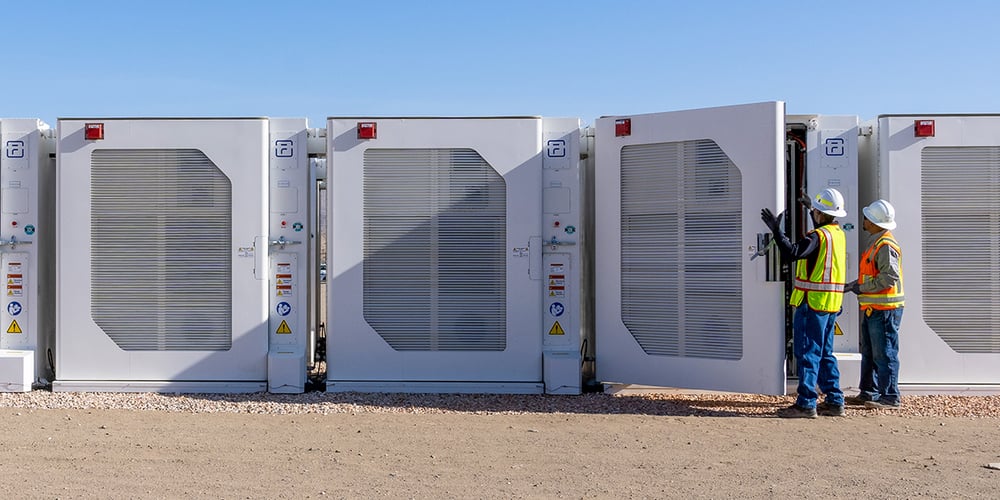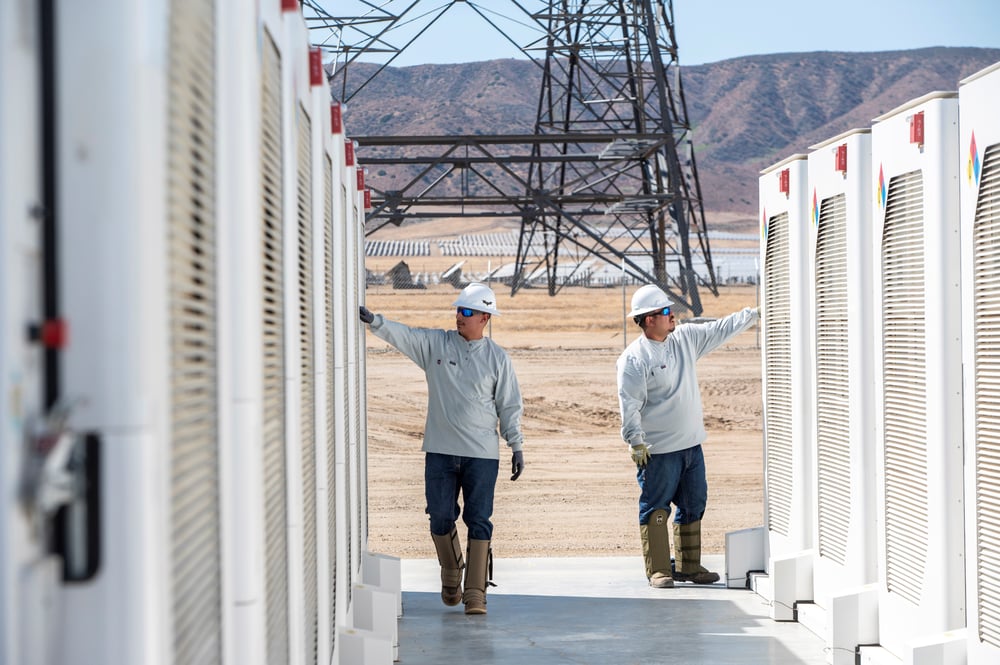On May 16, the U.S. Department of Treasury and Internal Revenue Service (IRS) published updated guidance on how project owners can qualify for the 10 percent Investment Tax Credit (ITC) and Production Tax Credit (PTC) domestic content bonus under the Inflation Reduction Act (IRA). In this Q&A, Suzanne Leta, Fluence VP of Policy and Advocacy, Americas, discusses key takeaways from the updated guidance and offers insights on expected industry impacts.
What is your initial assessment of the updated guidance?
%202.jpg?width=330&height=330&name=0KBR0233-web-size%20(3%20of%203)%202.jpg)
Suzanne Leta serves as the VP of Policy and Advocacy, Americas, at Fluence. Throughout her career in renewable energy, she has led initiatives in federal, state, local, and international public policy advocacy, public relations, business strategy, and project development. She also has more than 15 years of experience serving on the board or as an advisor to various trade associations and non-profit organizations. |
We are pleased to see this supplemental guidance released. The industry has highly anticipated it since the initial guidance was issued a year ago, and it is a welcome development.
First, the guidance rightly maintains the primary compliance pathway in the initial guidance that project owners have been utilizing to date, in which the owner works with a third-party tax accounting firm to verify the manufacturers’ direct costs (the “manufacturer direct cost option”). Second, the guidance establishes a new optional compliance pathway in which the owner can calculate the applicable domestic content product percentage for a project by adding up Treasury-prescribed percentages for each product and/or component purchased for that project (the “taxpayer cost option”).
The updated guidance provides two clear pathways for demonstrating compliance for the industry. As a result, it is expected to spur further investment in U.S. manufacturing and continue to foster strong demand for domestically produced battery-based energy storage systems – including from Fluence. We believe this updated guidance will help drive even more commercial activity for domestic content products in battery storage projects and support bonus credit-based tax equity finance for these projects.

What’s new in this supplemental guidance relative to the original guidance?
In alignment with the initial guidance, this update maintains the separation of the portions of an energy storage (or clean energy) project into steel/iron parts and manufactured product parts and specifies different requirements for each. The steel/iron parts component for energy storage covers rebars used in a system’s foundation (if the foundation is concrete) or steel/iron piles, driven piers, as applicable. The steel/iron parts component of the updated guidance is consistent with the original guidance and specifies that the rebar or steel/iron materials used in the foundation must be 100% U.S.-made.
The details of the manufactured product and applicable components in the guidance, also called the safe harbor table, were updated to include additional components associated with products within battery storage systems. However, the safe harbor table did not change any of the listed components in the primary piece of a battery storage system – the battery pack. Those four listed components remain the same: cells, packaging (i.e., modules), battery management system, and thermal management system.
In addition, the manufacturer direct cost option and the taxpayer cost option within the updated guidance are consistent with the initial guidance and the IRA legal requirements, which state that at least 40 percent of the total costs of all manufactured products and their components in land-based projects must be domestically produced. This percentage rises to 55 percent over time for projects utilizing the PTC. The easiest near-term compliance pathway for project owners to meet this minimum 40 percent requirement via available domestic content products for delivery in 2025 and 2026 is via the manufacturer direct cost option because it provides the most flexibility for products incorporating domestic cells and modules. Because the taxpayer cost option places a high percentage value (38 percent) on domestic cells, the effective impact is a requirement for battery packs to utilize 100 percent domestic cells. Accordingly, this is a compliance pathway likely best suited for delivery starting in late 2026 and beyond to allow domestic cell manufacturing to ramp up.
U.S.-manufactured battery cells are a critical component in the pathway to compliance in the updated guidance. Why is this important?
Since the original guidance was issued in May 2023, Fluence has advocated for the Treasury and IRS to value domestically manufactured battery cells as a critical part of battery pack products utilized to qualify for the domestic content bonus credit.
The updated guidance’s safe harbor table affirms the critical nature of domestically produced cells by placing a high percentage value (38 percent) on domestic cells for the taxpayer cost option. We believe that this, combined with the retention of the manufacturers direct cost option, makes it clear that the easiest pathway to achieve domestic content bonus compliance for battery storage projects is with battery packs that include domestically manufactured cells.
We applaud the Treasury and IRS for recognizing this value in the supplemental guidance. Placing a high value on domestically manufactured cells aligns with the original intent of the IRA, which is to spur investment in U.S. manufacturing and create a robust domestic supply chain for this critical component of battery storage technology.
How does the updated guidance impact Fluence’s ability to provide a storage product that qualifies for the IRA’s domestic content bonus?
Since 2021, Fluence has strategically regionalized and diversified our supply chain to serve customer demand for a domestic content product, support rapid project delivery for our customers, and mitigate market and pricing volatility.
With this updated guidance, we believe that Fluence remains positioned as one of the first companies capable of providing customers with energy storage products that allow project owners to qualify for the domestic content bonus under the IRA. This is because Fluence has a domestic content product that incorporates domestic cells and modules, with production starting later this year and customer deliveries in 2025. As proof of our ability to deliver, we publicly announced our first sales contract with domestic content product in our most recent earnings call.

Gridstack Pro is available with US-manufactured 305Ah LFP cells produced in an existing factory in Tennessee – enabling Fluence to bring domestic content systems to market in early 2025.
What additional steps is Fluence taking with its domestic content product?
We are actively exploring additional domestically sourced products and components for our storage products, such as inverters, containers, battery management and thermal management systems.
What next steps can the industry expect regarding the Treasury releasing additional guidance updates or rules?
We do not expect near-term changes to the guidance. However, the Treasury may consider updates and is taking comments on the supplemental guidance until July 15. We also expect the Treasury to initiate a formal rulemaking process, via issuance of proposed rules, in the future. The Treasury has not indicated any timeline for when they may do so. Project owners can rely upon the supplemental guidance for any project that starts construction prior to 90 days after the publication of proposed rules.

The Biden administration also announced an increased Section 301 tariff on non-EV batteries imported from China starting in 2026. What impact will this have on Fluence?
The coming 301 tariff increase is not expected to have a near-term impact on Fluence, as it does not apply to cubes, modules, or the specific cells that Fluence imports until 2026.
In addition, Fluence investments in domestic content products position the Company well ahead of the expected increase in tariffs in 2026. As mentioned, we have proactively secured domestically manufactured cells that qualify for domestic content under the current IRA requirements. We have a multiyear U.S. cell supply agreement that will begin delivering domestically manufactured cells to Fluence by the end of this calendar year. For our non-domestic content products, we are actively exploring non-Chinese supply options.
Do you have any closing comments?
We applaud the Biden administration for issuing the supplemental guidance. It provides more certainty to the industry, aligns with the spirit of the IRA, and will help the storage industry move forward.
If you’d like to learn more about this topic and the strategic steps Fluence has taken to deliver an energy storage product that complies with the IRA, read our recent blog article What it Really Takes to Deliver an IRA-compliant Energy Storage Product.
Want to learn more about energy storage solutions that qualify for the 10% ITC domestic content bonus under the IRA?
The blog is subject to Fluence’s disclaimer’s regarding forward-looking statements.


















